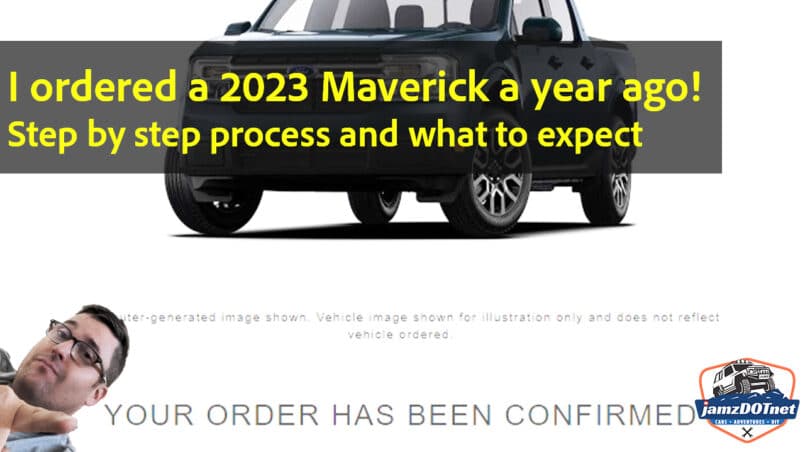It’s a small bed, front-wheel drive, hybrid,! My 2023 Ford Maverick XL Hybrid. My goal was to build the cheapest spec, which I believe I achieved, minus adding the manual window in the rear, which required adding the Ford co-pilot gizmo. What was the process like? Did I really order it a year ago? How long was shipping and how long was it until it went into production? I’ll answer all these questions and more!
Here are some key features and highlights of the Ford Maverick:
Hybrid Powertrain: One of the main selling points of the Ford Maverick is its hybrid powertrain option. It comes standard with a 2.5-liter four-cylinder engine paired with an electric motor and a lithium-ion battery pack. This setup allows for improved fuel efficiency and reduced emissions compared to traditional gasoline-powered trucks.
Unibody Construction: Unlike traditional body-on-frame trucks, the Maverick uses a unibody construction, which is similar to the design of many crossover SUVs. This construction provides a smoother ride and better handling on the road, making it a more comfortable and city-friendly pickup.
Compact Size: The Maverick is designed to be smaller and more maneuverable than Ford’s larger trucks. Its compact size makes it well-suited for urban driving and navigating through tight spaces.
Truck Bed: Despite its smaller size, the Maverick still offers a truck bed for hauling cargo. The bed has a payload capacity suitable for light to medium-duty tasks, making it practical for daily use and weekend projects.
Technology and Safety: The Maverick is equipped with modern infotainment systems, including an available 8-inch touchscreen with Ford’s SYNC 3 software. It also comes with various driver assistance features and safety technologies, depending on the trim level, such as adaptive cruise control, lane-keeping assist, and automatic emergency braking.
Customization Options: Ford typically offers different trim levels and optional packages for the Maverick, allowing buyers to tailor the truck to their specific needs and preferences.
A hybrid engine, also known as a hybrid powertrain, is a type of propulsion system used in vehicles that combines two or more distinct power sources to drive the vehicle. The primary goal of hybrid technology is to improve fuel efficiency, reduce emissions, and potentially enhance overall performance. The most common type of hybrid engine found in cars is the gasoline-electric hybrid.
Here’s how a typical gasoline-electric hybrid engine works:
Internal Combustion Engine (ICE): The traditional part of the hybrid powertrain is an internal combustion engine, which is usually a gasoline engine. This engine operates much like a standard gasoline car, using fuel combustion to generate power and drive the wheels.
Electric Motor: In addition to the internal combustion engine, a hybrid car also has an electric motor. The electric motor is powered by a battery pack that is usually recharged during driving or through regenerative braking (when the car slows down or decelerates).
Battery Pack: The electric motor is connected to a battery pack that stores electrical energy. Modern hybrids use advanced lithium-ion batteries that have a higher energy density, allowing for better performance and longer electric-only driving ranges.
Power Electronics: The power electronics system in a hybrid car manages the flow of electricity between the battery, electric motor, and internal combustion engine. It converts the direct current (DC) from the battery to alternating current (AC) used by the electric motor and vice versa.
Hybrid Control System: A sophisticated computerized control system manages the interactions between the internal combustion engine and the electric motor. It determines the optimal power distribution between the two sources based on driving conditions, throttle input, and other factors.
Regenerative Braking: Hybrids utilize regenerative braking technology, which captures and stores energy that would otherwise be lost as heat during braking. When the driver applies the brakes, the electric motor switches to generator mode, converting kinetic energy into electricity to recharge the battery.



